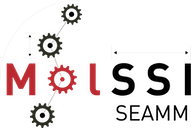Glossary#
- combining rules#
A rule for how to combine the Lennard-Jones-type parameters for single atoms into parameters for the interaction between two atoms. Common rules are
geometric,arithmeticorLorentz-Bertholet,sixth-powerorWaldman-Hagler. Wikipedia has a useful page describing combining rules.- dashboard#
The web interface to the Job Datastore responsible for monitoring and managing the executed jobs.
- DFT#
Density functional theory is a quantum mechanical method that is based on the electron density as the central quantity instead of wave functions. DFT has become very popular during the past few decades because it is simple to use and provides a good compromise between the computational cost and accuracy.
- DFTB#
Density Functional based Tight Binding method (DFTB) is a fast, parameterized DFT method. xTB is a similar, but slightly different method. Both are similar to the semiempirical approaches in MOPAC, which are based on Harterr-Fock theory rather than DFT. See the DFTB website for more information and references.
- flowchart#
A graphical representation of a multi-step simulation protocol. See Flowchart
- force-field#
An approximate, parameterized description of the potential energy surface (PES) for a system composed of (quasi-)atoms. A forcefield provides a mathematical description of the PES as a function of the coordinates of the atoms, using parameters to fit the physical PES. Typically, a forcefield is composed of a functional form (such as Lennard-Jones potentials for the non-bonded (van der Waals) interactions between atoms, harmonic or quartic or Morse potentials to describe bonds, etc.) and the parameters for specific interactions [such as the Lennard-Jones parameters \(\epsilon\) (well depth) and \(\sigma\) (particle size)]. A reference such as AMBER forcefield can refer to the functional form, to a specific set of parameters or to the combination of the two depending on the context.
See Overview of Forcefields for a more complete discussion.
- job#
Execution of each flowchart which is in contrast to the common meaning of a job as a unit of work submitted to a queue for execution. The SEAMM documentation will use batch job to refer to latter type unless it is clear from the context. A flowchart can be executed as a single batch job, may generate many batch jobs for individual tasks or can be executed directly with no batch job involved.
- job datastore#
is the central place where information about the jobs and their corresponding results such as the flowchart, inputs, and outputs are stored. This information can be inspected, monitored and queried.
- job manager#
The part of SEAMM that handles running jobs.
- plug-in#
The implementation of a workflow, comprised of a GUI for setting the control values for all steps, a container to hold the control values, and finally the implementation of the functionality of every step.
- SDF file#
A structured data file, which is used to store molecular structures and associated data. SDF files can handle multiple separate structures. Wikipedia has a useful page describing SDF and the related MOL file: Chemical table file.
- SMILES#
Simplified molecular-input line-entry system (SMILES) is a line notation for describing chemical species as a reasonably intuitive string of text. See the Wikipedia entry Simplified molecular-input line-entry system and references therein for more information.
- step#
A step in the simulation protocol, typically representing a single piece of work. Represented in a flowchart by a box, steps are implemented by plug-ins.
- task#
A batch process created by a step, often the execution of a simulation engine such as LAMMPS, GAMESS, Quantum Espresso, etc.
- xTB#
The Extended tight-binding (xTB) model is a semiempirical DFT-based model that is similar to DFTB. See Extended tight-binding quantum chemistry methods for details of the method. More references are available at the from the xtb website. The xTB and DFTB methods are related to the semiempirical methods in MOPAC, which are based on Hartree-Fock theory rather than DFT.

